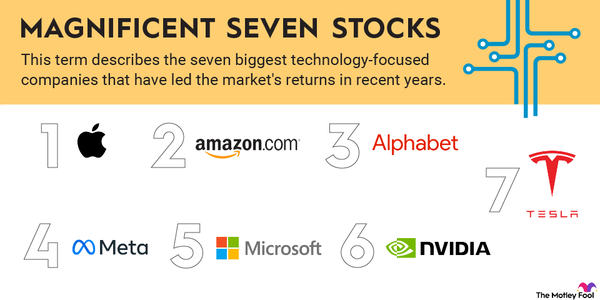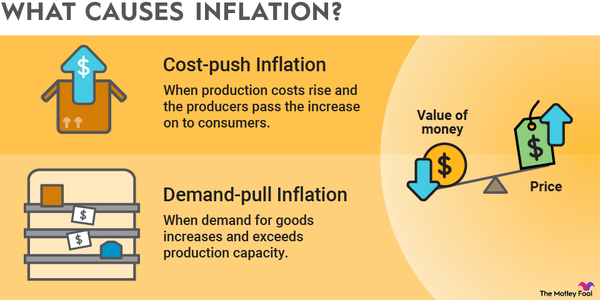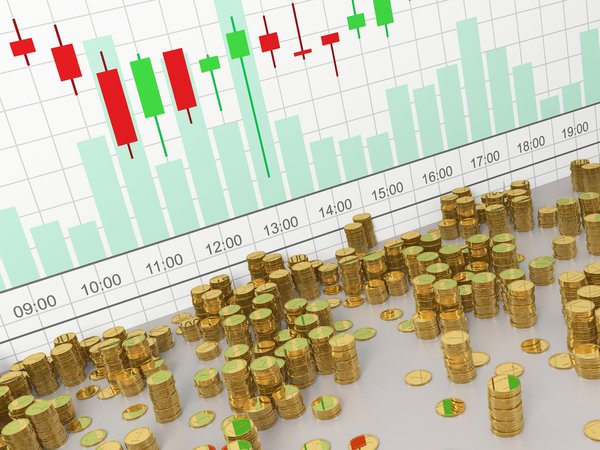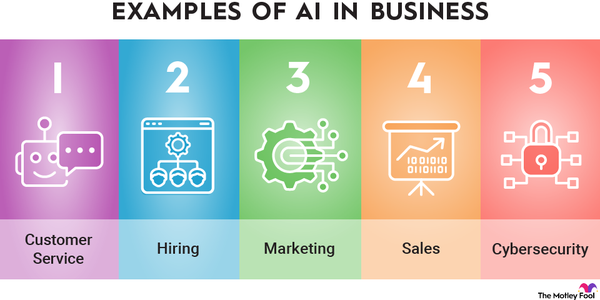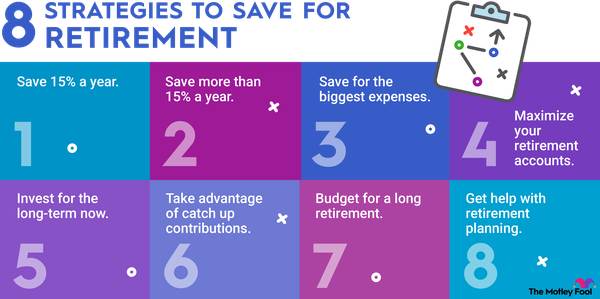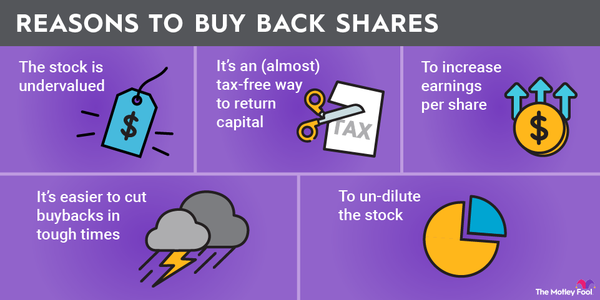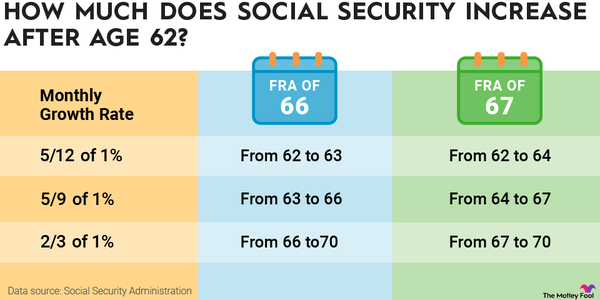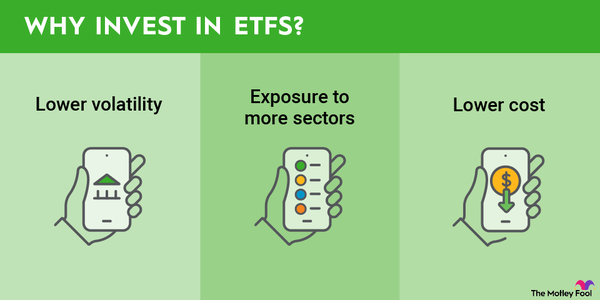Millennials and Gen Z have easier access to the stock market than any previous generation thanks to the rise of commission-free trading and user-friendly mobile investing apps. So what are they investing in, and what’s their investing style?

A Motley Fool survey of 2,000 investors reveals that younger generations are taking a modern approach to investing. While long-term gains are still a priority, Gen Z and millennials are embracing day trading and crypto-related stocks.
Those younger generations also consider dividend investing a side hustle and are learning how to do it on YouTube and TikTok.
Read on for the full findings from The Motley Fool’s 2025 Generational Investing Trends Survey.
Most common types of stocks owned by Gen Z and millennials
What are the most common types of stocks owned by Gen Z and millennials?
Different generations are more likely to own different types of stocks. Here’s how they break down:
- Growth stocks are the most popular type of stock among Gen Z (45%), followed by U.S. stocks (42%). Those positions are swapped for millennials, Gen X, and baby boomers.
- Gen Z and millennials are nearly 3 times more likely to hold speculative stocks (13% and 14%) than baby boomers (4%) and 50% more likely than Gen X (9%).
- Small- and mid-cap stocks and dividend stocks are more popular among Gen X and baby boomers than they are among Gen Z.
- Gen Z and millennials are more bullish about value stocks (39% each) and REITs (23% each) than are Gen X and baby boomers.
Those differences reflect the investing environments and goals of each generation. Gen Z’s and millennials’ investing experiences are shaped by meme stocks and a tough housing market, while Gen X and baby boomers might have received more traditional investing advice, steering them toward dividend-paying stocks and large-cap stocks.
| Stock type | Gen Z | Millennials | Gen X | Baby boomers | All |
|---|---|---|---|---|---|
| U.S. stocks | 42% | 54% | 56% | 56% | 51% |
| Growth stocks | 45% | 48% | 45% | 43% | 46% |
| Small- or mid-cap stocks | 31% | 39% | 45% | 43% | 39% |
| Dividend-paying stocks | 28% | 35% | 43% | 47% | 36% |
| Value stocks | 39% | 39% | 29% | 16% | 34% |
| Large-cap stocks | 26% | 32% | 38% | 38% | 33% |
| Real estate stocks (REITs) | 23% | 23% | 15% | 9% | 19% |
| International stocks | 16% | 18% | 21% | 18% | 18% |
| Speculative stocks (e.g., penny stocks, meme stocks) | 13% | 14% | 9% | 4% | 11% |
| ESG or socially responsible stocks | 15% | 13% | 6% | 4% | 11% |
| Cyclical stocks | 10% | 9% | 6% | 2% | 8% |
| Recent IPO stocks | 6% | 3% | 3% | 1% | 4% |
Most common investment sectors owned
What are the most common sectors owned by investors by generation?
Stock ownership by sector and industry varies by generation in some areas, but all generations agree that technology and, to a lesser extent, financials are a good bet. Here’s how stock ownership by sector and industry looks by generation:
- Technology stocks are held by 50% or more of each generation surveyed by The Motley Fool, and financial stocks are held by 34% or more.
- Gen Z and millennials are more likely to hold cryptocurrency-related stocks (23% and 28%) than Gen X (16%) and baby boomers (8%).
- Gen Z and millennials are also slightly more likely to have invested in AI stocks (22% and 21%) than Gen X (15%) and baby boomers (12%).
- Baby boomers are much more likely to own energy and utility stocks (50%) compared to Gen Z (30%), millennials (34%), and Gen X (39%).
- Healthcare and biotech stock ownership increases with age, with 29% of Gen Z owning stocks in the sector compared to 42% of boomers.
| Sector/industry | Gen Z | Millennials | Gen X | Baby boomers | All |
|---|---|---|---|---|---|
| Technology | 50% | 58% | 59% | 58% | 56% |
| Financials | 36% | 38% | 34% | 34% | 36% |
| Healthcare and biotech | 29% | 36% | 40% | 42% | 36% |
| Energy and utilities | 30% | 34% | 39% | 50% | 36% |
| Real estate | 29% | 26% | 21% | 15% | 24% |
| Consumer (discretionary and staples) | 16% | 22% | 26% | 23% | 21% |
| Industrials and materials | 20% | 20% | 23% | 24% | 21% |
| Cryptocurrency-related stocks | 23% | 28% | 16% | 8% | 21% |
| AI stocks | 22% | 21% | 15% | 12% | 18% |
| Communications and media | 14% | 15% | 19% | 20% | 16% |
| Marijuana industry | 9% | 15% | 9% | 6% | 11% |
| Alcohol stocks | 11% | 9% | 7% | 5% | 8% |
| Casino and sports betting stocks | 12% | 9% | 5% | 5% | 8% |
| Tobacco stocks | 9% | 7% | 7% | 4% | 7% |
Differences in investing preferences align with broader generational trends, such as younger investors being more likely to own cryptocurrency and use AI. Survey results also suggest that older investors are more likely to invest in defensive sectors and industries, like energy and utilities and consumer staples, perhaps as a way to protect their portfolios as they near or enter retirement.
More about stock market sectors
Investments Gen Z and millennials see as riskiest
What investments do Gen Z and millennials see as riskiest?
The different generations mostly view the risks of different types of investments similarly, with all saying that stocks are the least risky type of investment, followed by cryptocurrency. ETFs and mutual funds received a similar average risk score across generations as well.
Perceived risk in investing in real estate generated the largest divergence among generations, with Gen Z and millennials finding it slightly less risky than Gen X and baby boomers.
Investments are ranked in order of risk, with 1 being the least risky and 9 being the riskiest. Table shows average rank.
| Investment | Gen Z | Millennials | Gen X | Baby boomers | All |
|---|---|---|---|---|---|
| Stocks | 4.2 | 3.9 | 3.9 | 3.9 | 4.0 |
| Cryptocurrency | 4.2 | 4.4 | 4.2 | 4.0 | 4.3 |
| ETFs | 4.5 | 4.4 | 4.4 | 4.5 | 4.4 |
| Mutual funds | 4.6 | 4.5 | 4.4 | 4.5 | 4.5 |
| Bonds | 4.8 | 4.4 | 4.7 | 4.9 | 4.6 |
| Options | 4.4 | 4.7 | 4.6 | 4.4 | 4.6 |
| Index funds | 4.6 | 4.8 | 4.6 | 4.7 | 4.7 |
| Real estate | 4.6 | 4.9 | 5.2 | 5.1 | 5.0 |
Factors that influence stock-buying decisions
The factors Gen Z and millennials care most about when deciding whether to buy a stock
There aren’t many differences between generations when it comes to what drives investing decisions. Potential for long-term gain is what investors value most in an investment, while trust in management is the top factor that drives the decision to buy a stock, regardless of age.
The least important factors are the same across groups as well: the potential for short-term gains and advice from TikTok creators.
A few differences between generations when it comes to making decisions about buying a stock are worth pointing out:
- Baby boomers place more emphasis on knowledge of the company or fund than other generations. To them, it’s the second-most-important factor.
- When it comes to deciding whether to buy a stock, Gen Z is the only generation to value advice from Reddit, YouTube, and AI over stock ideas from free investing websites or blogs.
What investors value most in an investment
Rank the following factors in order of importance when considering an investment, with 1 being most important and 7 being least important.
| Factor | Gen Z | Millennials | Gen X | Baby boomers | All |
|---|---|---|---|---|---|
| Potential for long-term gains | 2.5 | 2.8 | 2.5 | 2.4 | 2.8 |
| Historical performance | 3.7 | 3.9 | 3.7 | 3.6 | 3.8 |
| Dividends | 4.0 | 3.7 | 4.0 | 4.1 | 3.9 |
| Knowledge of the company or fund | 3.8 | 4.0 | 3.8 | 3.5 | 3.9 |
| ESG factors | 4.2 | 4.1 | 4.2 | 4.0 | 4.1 |
| Knowledge of the industry | 4.5 | 4.6 | 4.7 | 4.6 | 4.6 |
| Potential for short-term gains | 5.3 | 4.8 | 5.3 | 5.9 | 4.9 |
What drives a stock buy decision
Rank the following factors in order of importance when determining whether or not you'll buy a stock, with 1 being the most important and 10 being the least important.
| Factor | Gen Z | Millennials | Gen X | Baby boomers | All |
|---|---|---|---|---|---|
| Trust in management | 4.4 | 4.2 | 3.9 | 3.2 | 4.0 |
| Competitive advantage, understanding the company and industry | 4.5 | 4.3 | 4.0 | 3.6 | 4.2 |
| Dividends | 4.9 | 4.7 | 4.1 | 3.9 | 4.5 |
| Market cap and company finances | 5.0 | 4.8 | 4.4 | 3.9 | 4.6 |
| Recommendations from paid stock advisory services | 5.5 | 5.4 | 5.0 | 4.5 | 5.2 |
| Stock ideas from free investing websites or blogs | 6.3 | 6.0 | 5.8 | 5.8 | 6.0 |
| Recommendations from AI tools | 5.6 | 6.0 | 6.4 | 6.7 | 6.1 |
| Discussions on Reddit | 5.9 | 6.4 | 6.9 | 7.6 | 6.6 |
| Reviews from YouTube investing influencers | 6.2 | 6.4 | 7.0 | 7.5 | 6.6 |
| Advice from TikTok creators | 6.7 | 6.9 | 7.6 | 8.4 | 7.2 |
Dividend stock popularity
How popular are dividend stocks among Gen Z and millennial investors?
Across all generations, between 15% and 16% allocate more than 50% of their portfolios to dividend stocks, meaning that for the majority of investors, dividend stocks make up less than half of their investments.
It’s worth noting that Gen X and baby boomer respondents are more likely to say that they’re not sure how much of their portfolio is in dividend stocks, which could reflect a more hands-off approach to portfolio management.
| Percent of portfolio in dividend stocks | Gen Z | Millennials | Gen X | Baby boomers | All |
|---|---|---|---|---|---|
| 0% | 3% | 3% | 4% | 6% | 4% |
| 1% to 25% | 34% | 40% | 37% | 42% | 37% |
| 26% to 50% | 43% | 36% | 31% | 25% | 35% |
| 51% to 75% | 10% | 11% | 11% | 9% | 11% |
| Over 75% | 4% | 4% | 6% | 7% | 5% |
| Not sure | 5% | 6% | 12% | 10% | 8% |
Why do Gen Z and millennials invest in dividend stocks?
Gen Z, millennials, and Gen X invest in dividend stocks for different reasons than baby boomers.
For those younger generations, dividend stocks provide an opportunity for long-term compounding, just like any other stock, and reliable income. Baby boomers see dividend stocks as a way to earn additional reliable income as well but are much more likely to say that they invest in dividend stocks so they can reinvest that extra cash in the market. Just 18% of Gen Z and 27% of millennials said they buy dividend stocks to reinvest the dividend compared to 49% of baby boomers.
| Reason | Gen Z | Millennials | Gen X | Baby boomers | All |
|---|---|---|---|---|---|
| Long-term compounding | 56% | 48% | 44% | 27% | 47% |
| Reliable income | 43% | 50% | 46% | 51% | 47% |
| Reinvesting dividends for growth | 18% | 27% | 41% | 49% | 31% |
| Defensive/less volatile | 23% | 20% | 14% | 11% | 18% |
| Hedge against inflation | 19% | 16% | 12% | 10% | 15% |
| Tax advantages | 11% | 7% | 8% | 7% | 9% |
That divide is reflected by the fact that 70% of baby boomers reinvest their dividends automatically, compared to 53% of Gen X, 38% of millennials, and 23% of Gen Z.
Millennials and Gen Z are more likely than any other generation to withdraw their dividend income and use it as cash for everyday expenses, as fun money, or to put toward saving for a specific goal.
What do Gen Z and millennial investors do with their dividends?
| Age | Gen Z | Millennials | Gen X | Baby boomers | All |
|---|---|---|---|---|---|
| Reinvest them automatically | 23% | 38% | 53% | 70% | 41% |
| Save them for specific financial goals | 19% | 17% | 14% | 8% | 16% |
| Take them as cash income for everyday expenses | 26% | 17% | 8% | 5% | 16% |
| Take them as cash for fun money | 18% | 15% | 9% | 4% | 13% |
| Reallocate manually into other investments | 11% | 9% | 10% | 10% | 10% |
| Not sure/it varies | 3% | 4% | 5% | 3% | 4% |
Is dividend investing a new side hustle?
Dividend investing is considered a side hustle for 64% of Gen Z and 53% of millennials compared to 28% of Gen X and 15% of baby boomers. That could represent a generational rebranding of passive income, from retirement strategy to side gig, that could make dividend investing even more attractive to younger investors.
Do you view earning dividends as a “side hustle” or alternative to gig work?
| Age | Yes |
|---|---|
| Gen Z | 64% |
| Millennials | 53% |
| Gen X | 28% |
| Baby boomers | 15% |
| All | 45% |
Where do Gen Z and millennials learn about dividend investing?
For Gen Z and millennials, learning about dividend investing starts where they’re already spending their time: on their phones and on social media. They’re more likely to use YouTube than a financial advisor or paid stock-picking service to get dividend investing advice.
- YouTube is the top source of dividend investing education for Gen Z (67%) and millennials (56%) but is used by just 29% of Gen Z and is near the bottom of the list for baby boomers (6%).
- TikTok is the second-most-turned-to source of dividend investing advice for Gen Z (48%) but drops sharply among older generations, particularly Gen X (8%) and boomers (1%).
- Reddit is used for dividend investing education for 27% of Gen Z and 28% of millennials but just 11% of Gen X and 3% of baby boomers.
- Baby boomers are twice as likely as Gen Z to use a financial advisor for dividend advice (54% versus 25%).
- Friends and family are a top choice among all age groups for learning about dividend investing.
- Using podcasts as a tool to learn about dividend investing skews away from boomers (8%) and toward Gen Z (22%) and millennials (24%).
| Age | Gen Z | Millennials | Gen X | Baby boomers | All |
|---|---|---|---|---|---|
| YouTube | 67% | 56% | 29% | 6% | 47% |
| Friends/family | 40% | 42% | 42% | 42% | 42% |
| Free financial/investing website | 26% | 37% | 40% | 35% | 34% |
| Financial advisor | 25% | 28% | 40% | 54% | 33% |
| TikTok | 48% | 26% | 8% | 1% | 24% |
| 27% | 28% | 11% | 3% | 20% | |
| Podcasts | 22% | 24% | 17% | 8% | 20% |
| Paid stock recommendation service | 19% | 14% | 13% | 10% | 15% |
| 17% | 15% | 12% | 2% | 14% | |
| Blogs | 13% | 16% | 9% | 5% | 12% |
| Other | 1% | 2% | 5% | 8% | 3% |
Best portfolio size
What do Gen Z and millennials think is the best investment portfolio size?
How many stocks belong in a portfolio has long been debated, and different generations have different opinions.
- Gen Z and millennials are more likely than Gen X and baby boomers to think a portfolio can be considered high performing with 10 or fewer stocks.
- 39% of Gen Z versus 28% of boomers think one to five stocks can comprise a high-performing portfolio, showing younger investors are more comfortable with concentrated bets.
- 5% of Gen Z and 15% of boomers think a high-performing portfolio should have more than 20 stocks, highlighting that older investors view diversification as key to returns.
How many companies/funds do you think you should own stock in to have a high-performing portfolio?
| Number of investments | Gen Z | Millennials | Gen X | Baby boomers | Grand Total |
|---|---|---|---|---|---|
| 1 to 5 | 39% | 33% | 27% | 28% | 32% |
| 6 to 10 | 40% | 40% | 40% | 36% | 39% |
| 11 to 20 | 16% | 18% | 20% | 21% | 19% |
| More than 20 | 5% | 9% | 13% | 15% | 10% |
The Motley Fool recommends owning at least 25 different companies from a handful of different industries when building a diversified portfolio. Investing in index funds, such as an S&P 500 index fund, is a surefire way to diversify your holdings. Plus the best index funds come with minimal fees.
Investment goals
What are Gen Z’s and millennials' primary investment goals?
Retirement planning is the top overall investment goal, but not for Gen Z and millennials. Here’s how investment goals break down by generation:
- Retirement planning is by far the top investment goal for Gen X (58%) and baby boomers (72%) but is a distant second for Gen Z (20%) and millennials (40%).
- The top investment goal for Gen Z and millennials is building passive income (43% and 40%, respectively).
- Investing primarily to eventually buy a home is the third-most-common goal for Gen Z (16%) and millennials (9%) but second to last for Gen X (2%) and baby boomers (2%).
What is your primary investment goal?
| Investment goal | Gen Z | Millennials | Gen X | Baby boomers | All |
|---|---|---|---|---|---|
| Retirement planning | 20% | 30% | 58% | 72% | 39% |
| Passive income | 43% | 40% | 22% | 14% | 33% |
| Buying a home | 16% | 9% | 2% | 2% | 8% |
| Capital appreciation | 7% | 10% | 8% | 6% | 8% |
| Paying off debt | 5% | 7% | 6% | 5% | 6% |
| Starting a business | 9% | 4% | 3% | 0% | 4% |
| Other | 0% | 1% | 1% | 0% | 1% |
Trade frequency
How frequently do Gen Z and millennials make stock trades?
Younger Americans tend to be more active -- especially in the stock market. This is how frequently each generation trades:
- Half of Gen Z investors and 43% of millennials trade stocks or funds at least weekly, roughly double Gen X (23%) and about 5 times more than baby boomers (11%).
- Day trading in particular is more common among Gen Z (16%) and millennials (14%) than Gen X (6%) and baby boomers (2%).
- Gen X and baby boomers love to leave their portfolios alone. Two in three boomers surveyed by The Motley Fool trade less than once a month, as do 42% of Gen X, compared to 16% of Gen Z and 20% of millennials.
How frequently do you buy or sell stocks or funds?
| Age | Gen Z | Millennials | Gen X | Baby boomers | All |
|---|---|---|---|---|---|
| Daily | 16% | 14% | 6% | 2% | 11% |
| Weekly | 34% | 29% | 17% | 9% | 25% |
| Multiple each month | 24% | 27% | 24% | 14% | 24% |
| Once a month | 10% | 9% | 12% | 9% | 10% |
| Less than once a month | 16% | 20% | 42% | 66% | 29% |
How Gen Z and millennials are investing differently
Dividend side hustles and social media: How Gen Z and millennials are investing differently
Younger investors continue to reshape what it means to build wealth and how to invest to do it. They view dividend investing as a side hustle they can master through social media. Day trading isn’t a rare occurrence. Crypto-related stocks are seen as potentially netting big returns.
Still, the younger generations don’t diverge entirely from Gen X and baby boomers. They all value long-term gains and strong company management more than anything else when considering an investment and view the tech sector as having the best odds of delivering strong returns. And friends and family are trusted sources of investing advice across all generations.
Ultimately, a mix of new tools and old truths is shaping how the next generation builds wealth.
Methodology
The Motley Fool surveyed 2,000 American adults via Pollfish on July 17, 2025. Results were post-stratified to generate nationally representative data based on age and gender. The demographic breakdown of respondents is as follows: 28% Gen Z, 31% millennial, 33% Gen X, 9% baby boomer, 48% male, and 52% female. Pollfish employs organic random device engagement sampling, a method that recruits respondents through a randomized invitation process across various digital platforms. This technique helps to minimize selection bias and ensure a diverse participant pool.







